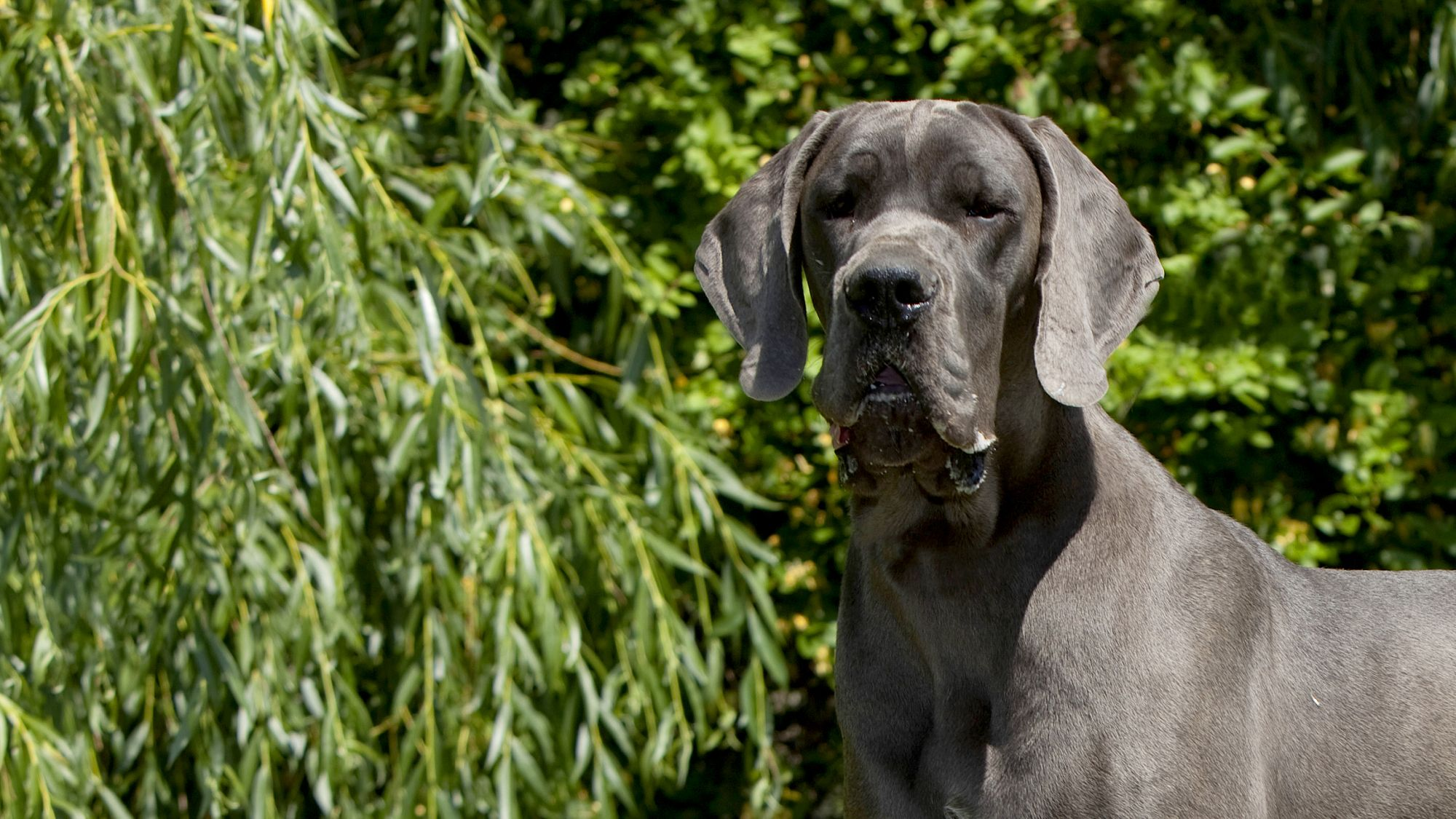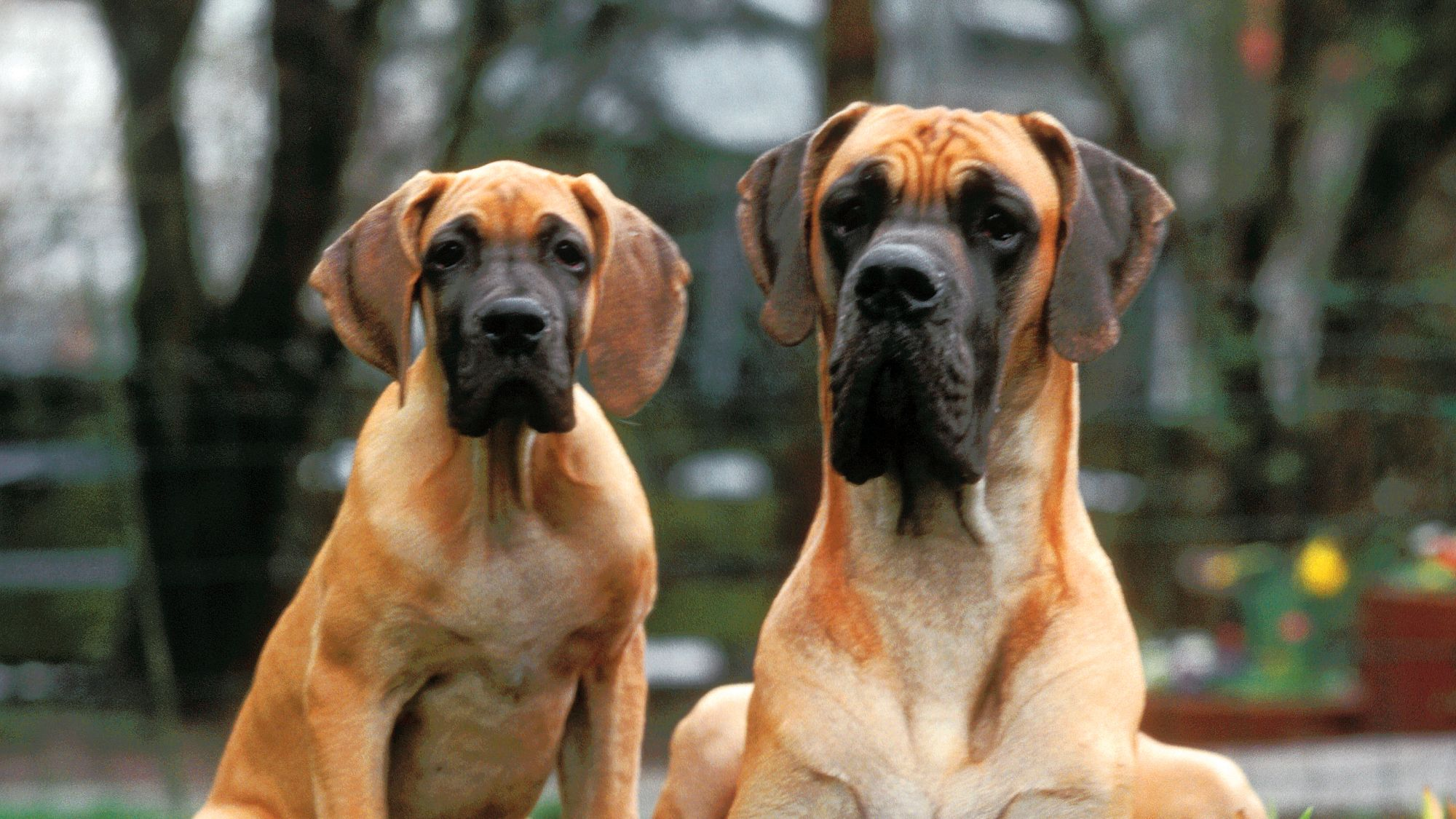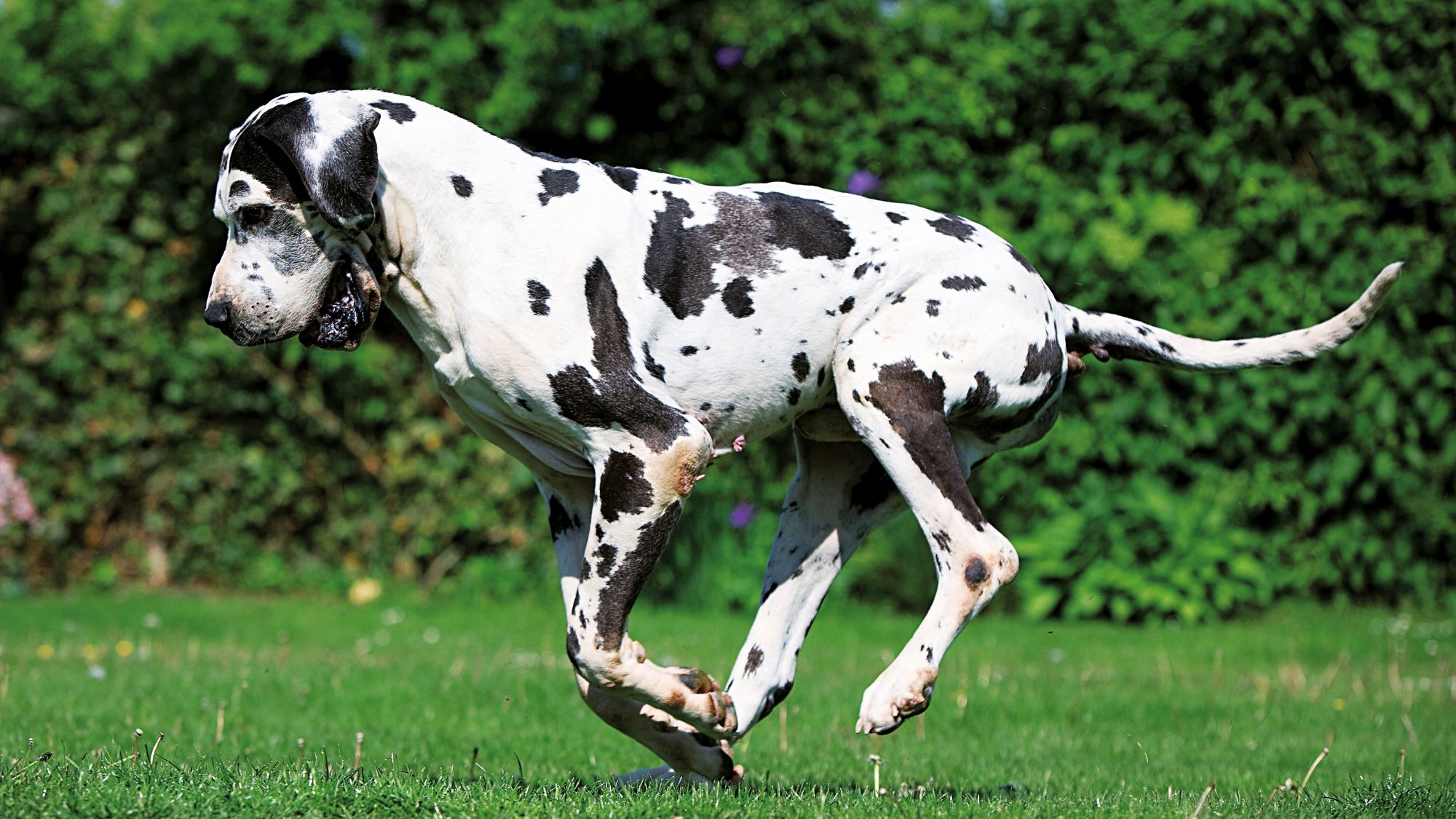Let's talk Great Danes
Official name: Great Dane
Origins: Germany
Drooling tendencies
4 out of 5Shedding Level
3 out of 5Energy level
3 out of 5Compatibility with other pets
5 out of 5Warm weather?
2 out of 5Suited to apartment living
1 out of 5Family pet
3 out of 5Can stay alone
1 out of 5
| Male | Female |
|---|---|
| Height | Height |
| 76 - 81 cm | 71 - 76 cm |
| Weight | Weight |
| 63 - 77 kg | 50 - 63 kg |
| Life Stage | |
|---|---|
| Puppy | Adult |
| 2 to 8 months | 8 months to 2 years |
| Mature | Senior |
| 2 to 5 years | From 10 years |
| Baby | |
| Birth to 2 months | |
Drooling tendencies
4 out of 5Shedding Level
3 out of 5Energy level
3 out of 5Compatibility with other pets
5 out of 5Warm weather?
2 out of 5Suited to apartment living
1 out of 5Family pet
3 out of 5Can stay alone
1 out of 5
| Male | Female |
|---|---|
| Height | Height |
| 76 - 81 cm | 71 - 76 cm |
| Weight | Weight |
| 63 - 77 kg | 50 - 63 kg |
| Life Stage | |
|---|---|
| Puppy | Adult |
| 2 to 8 months | 8 months to 2 years |
| Mature | Senior |
| 2 to 5 years | From 10 years |
| Baby | |
| Birth to 2 months | |

Get to know the Great Dane
All you need to know about the breed
Great Danes are quite simply huge: a sweet, friendly, and affectionate character wrapped in over-sized packaging.
They have maintained the stature and strength needed for their original mission — hunting wild boar — but over the centuries, aggressiveness has been bred out of them, giving way to gentleness. Great Danes are handsome hounds, with a majestic demeanour, alert expression, and dense glossy coat in one of three evocative colour combinations: fawn and brindle, black and harlequin, or blue.
Once trained — and this should be relatively straightforward — Great Danes get on well with children and can make lovely family pets, with the caveat that they do require a level of commitment that’s a notch above a smaller dog. If you’re pushed for space or a collector of valuable china ornaments — one swipe of that solid Great Dane tail at tabletop height can have devastating consequences — you may want to reconsider.
Great Danes require a decent amount of exercise, although despite their size they are not the most energetic breed around. Once fully grown they enjoy a variety of exercise — walks, runs, and the chance to potter around in an enclosed space (luckily they can’t jump so you won’t need to raise your fence). One thing to bear in mind is that because of their enormous size, Great Danes’ average lifespan is short.
On a day-to-day basis, the only real downside to having a Great Dane as a pet is the slobber. Great Danes drool a considerable amount. But these affable, larger-than-life characters more than make up for that in the pleasure they bring their human companions.

Two facts about Great Danes
1. Scooby-Dooby-Doo, Where Are You?
The loveable but cowardly cartoon canine Scooby-Doo is thought to be loosely based on a Great Dane. The breed has had another brush with stardom in the form of Marmaduke, the super-sized star of a comic strip, which was first printed in the 1950s and was made into a movie in 2010.
2. Great (Not) Dane
The Great Dane is, with impeccable logic, not actually Danish at all: the breed’s origins lie in Germany, where in 1878, a committee of judges and breeders met in Berlin to classify several similar dogs known by different names under just one: Deutsche Dogge. That literally translates into English as "German Dog". So the breed became known in English as the Great Dane. Makes sense.
History of the breed
For a breed with such a long history, it’s not surprising that the Great Dane’s origins are not always clear. Images from Egyptian tombs suggest they may have existed for thousands of years. Mastiff- and greyhound-like breeds, as well as an extinct German hunting dog (the Bullenbeisser), are thought to feature in Great Danes’ ancestry.
What is certain is that the precursors to modern Great Danes were prized as wild boar hunters, as well as guard dogs in medieval Germany. When the breed first came to the United Kingdom, the dogs were known as German boarhounds.
In the 19th century several similar varieties were classified together under a new name — Deutsche Dogge. How that became Great Dane in English is not clear, but to complicate matters further it may have been via the translation of a French name given to the breed: Le Grand Danois.
From head to tail
Physical characteristics of Great Danes
1.Head
2.Face
3.Body
4.Coat
5.Tail

Things to look out for
From specific breed traits to a general health overview, here are some interesting facts about your Great Dane
Beware of bloat
Gastric dilatation and volvulus (GDV), more commonly known as bloat, affects many large breeds but is the most common problem associated with Great Danes. Owners need to know the signs to look out for — bloated abdomen, restlessness, retching, salivation, and whining or abnormal stillness — and what to do: seek immediate help from a veterinarian. Some owners opt for preventive surgery, which can protect their dogs, partially at least. The procedure, called gastropexy, involves stitching the walls of the stomach in place and should prevent the life-threatening torsion (volvulus) of the stomach, although not the dilatation (bloating). It’s a good start.
Hip problems
As a tall breed, the Great Dane can be prone to osteoarticular diseases — or diseases of the bones and joints. In particular, the Great Dane breed can suffer from antebrachial growth deformities. These deformities of the dogs’ forelegs can lead to pain and reduced movement. To avoid conditions such as these, feeding Great Danes the correct food from puppyhood is important, as is avoiding calcium supplements.

Caring for your Great Dane
Grooming, training, and exercise tips
7/7
All about Great Danes
Yes, they do. Properly trained Great Danes can be great fun: sociable, eager to please, and good with children — under supervision, of course. Their sheer size means they are not for the faint-hearted: you’ll need plenty of space at home for a start and because they’re so huge, albeit gentle, they may not be the most practical choice for families with very small children.
Great Danes are not known to be aggressive, although their large size may understandably make some people nervous: all the more reason to make sure they are well trained. Great Danes are not particularly known for their barking either — but with great vocal chords to match great everything else, when they do decide to express an opinion you’ll certainly know about it.
Read more on this topic
Sources
- Veterinary Centers of America https://vcahospitals.com/
- Royal Canin Dog Encyclopaedia. Ed 2010 and 2020
- Banfield Pet Hospital https://www.banfield.com/
- Royal Canin BHN Product Book
- American Kennel Club https://www.akc.org/
Like & share this page